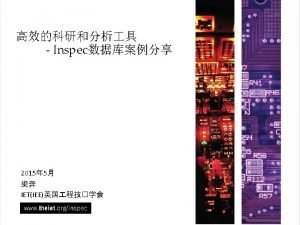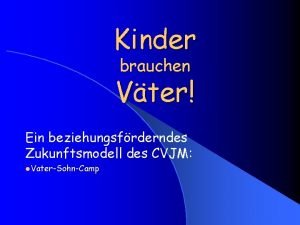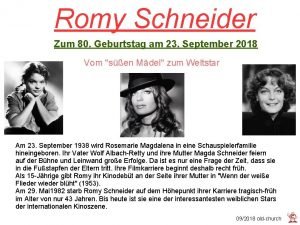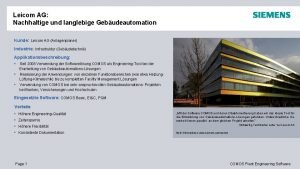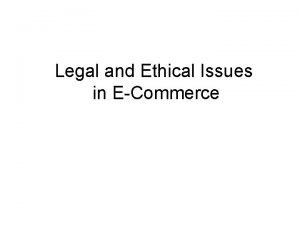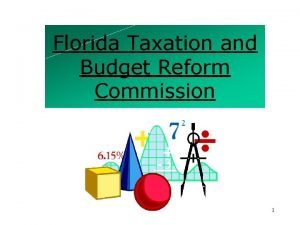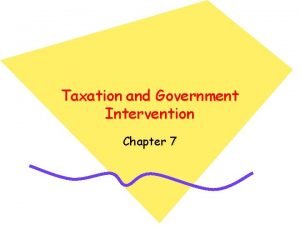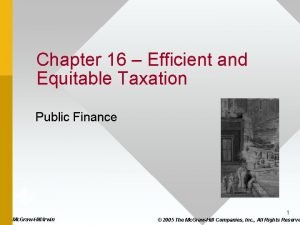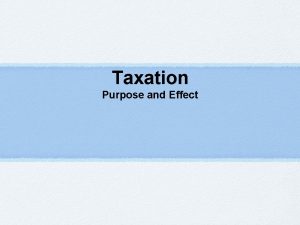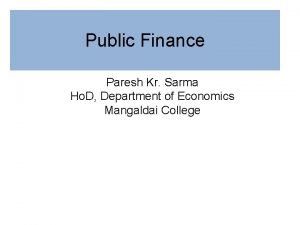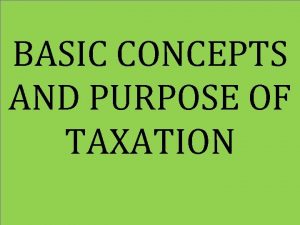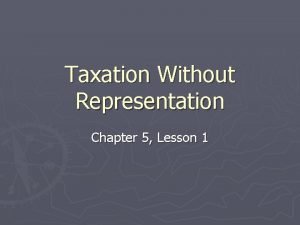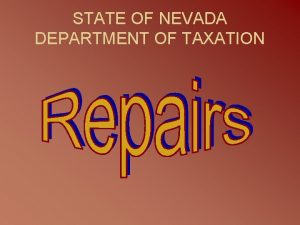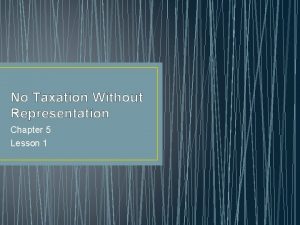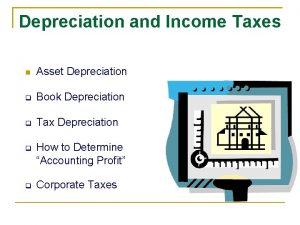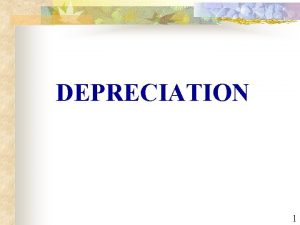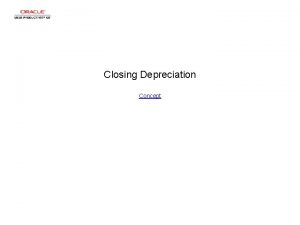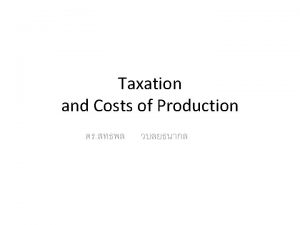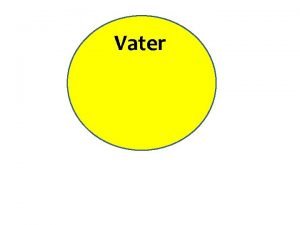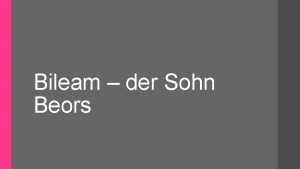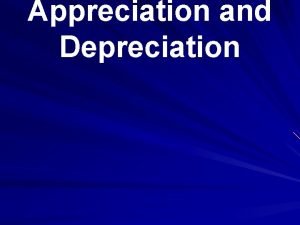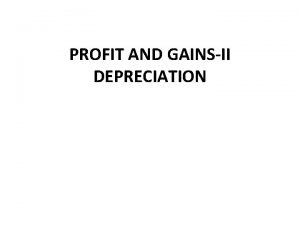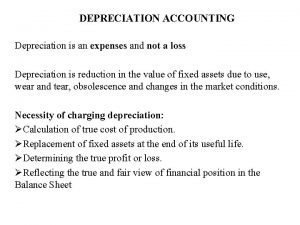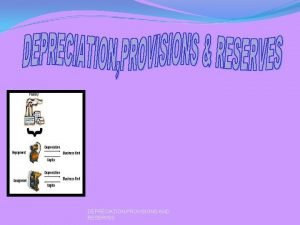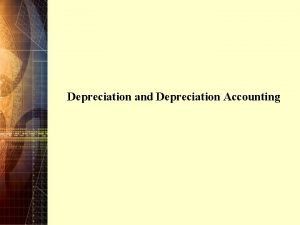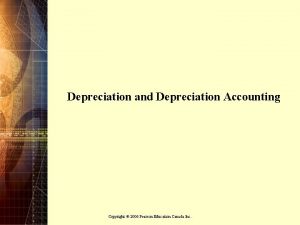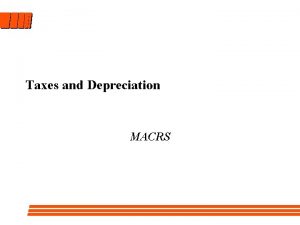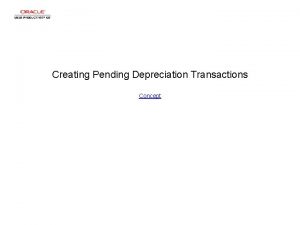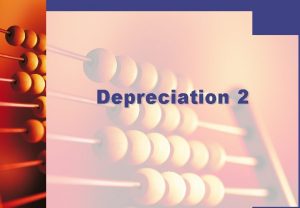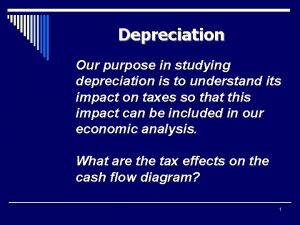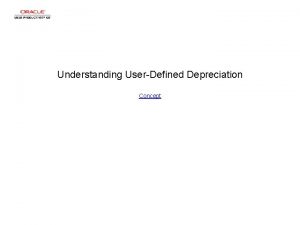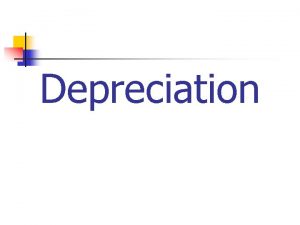IET 333 Depreciation and Taxation Jungwoo Sohn jzs

























- Slides: 25

IET 333: Depreciation and Taxation Jung-woo Sohn (jzs 177@psu. edu)

Announcements: • No class on next Thursday (December 11 th) • Instead, we will have a class time on Wednesday evening (December 10 th) • Around 6 pm? • Topic: Final review • Pizza will be served!

Depreciation • Depreciation: • Decrease in value of an asset • Depreciation caused by: • New products, technological innovations, etc. • Usually capital equipment • Machinery • Depreciation amount: • Determined by the market • Or your own estimation/prediction

Depreciation example: Used car value example Source: http: //livingstingy. blogspot. com/2012/04/cars-with-low-depreciation-self. html

Depreciation: Terminology • Asset • Resource used in business • Useful life • Duration of time resources are expected to be in use • Market value • The value what the asset can be disposed of at the time of sale • Book value: prediction/estimation • The value what the owner needs to sell (to avoid a loss) • Starts from the first cost • Relationship to tax: • Depreciation is regarded to contribute to the production of goods • Non-taxable

Depreciation: terminology

Depreciation: terminology • Depreciation cost: accumulates over the years

Depreciation: Straight-line depreciation • Same depreciation cost every year: • Total depreciation: P – S • Annual depreciation: (P – S) / N

Depreciation: Straight-line depreciation • Example: A robot costs $25, 000. At the end of fouryear useful life its salvage value is estimated to be $5, 000. Prepare its depreciation schedule under the straight-line method. • P = $25, 000, S = $5, 000, N = 4 • Therefore, annual depreciation: (25, 000 – 5, 000) / 4 = 5, 000

Depreciation: SOYD method •

Depreciation: Declining balance with SOYD method

Depreciation: SOYD method • Example: A robot costs $25, 000. At the end of fouryear useful life its salvage value is estimated to be $5, 000. Prepare its depreciation schedule under the SOYD method. • SOYD = 1 + 2 + 3 + 4 = 10 years • P – S = 25, 000 – 5, 000 = 20, 000 • Depreciations: • Depreciation rates: • • 1 st year: 4/10 2 nd year: 3/10 3 rd year: 2/10 4 th year: 1/10 • • 1 st year: 4/10 * 20, 000 2 nd year: 3/10 * 20, 000 3 rd year: 2/10 * 20, 000 4 th year: 1/10 * 20, 000

Depreciation: SOYD method • Example: A robot costs $25, 000. At the end of four-year useful life its salvage value is estimated to be $5, 000. Prepare its depreciation schedule under the SOYD method. Year Beginning Book Value Depreciation Ending Book Value 1 $25, 000 20, 000 * 0. 4 = 8, 000 $17, 000 20, 000 * 0. 3 = 6, 000 11, 000 3 11, 000 20, 000 * 0. 2 = 4, 000 7, 000 4 7, 000 20, 000 * 0. 1 = 2, 000 5, 000 Total: 20, 000

Depreciation: Double-declining balance method •

Depreciation: DDB method • Example: A robot costs $25, 000. At the end of four-year useful life its salvage value is estimated to be $5, 000. Prepare its depreciation schedule under the DDB method. • Depreciation rate: 2/N = 2/4 = 0. 5 Year Beginning book value Depreciation Ending book value 1 $25, 000 $12, 500 = $25, 000 * 0. 5 $12, 500 = $25, 000 - $12, 500 2 12, 500 6, 250 = 12, 500 * 0. 5 6, 250 = 12, 500 – 6, 250 3, 125 = 6, 250 * 0. 5 3, 125 = 6, 250 – 3, 125 4 3, 125 1, 563 = 3, 125 * 0. 5 1, 562 = 3, 125 – 1, 563 Total = $23, 438 • Ending book balance: 1562 < 5000? ? ?

Depreciation: DDB method • How to compensate the loss below the salvage value estimation? • Stop applying DDB at certain points • Switch to straight-line method in the middle

Depreciation: Switching to linear depreciation

Depreciation: Comparison of different methods

Depreciation: Accelerated cost recovery system (ACRS) • Why ACRS? • To tackle the cons of the depreciation methods so far • SYOD: Depreciation is not realistic • DDB: Depreciation realistic but problem with the salvage value • The idea for ACRS: • Consider a set of depreciation rates with • Accelerated decline • Converging to the estimated salvage value • MACRS (Modified Accelerated Cost Recovery System)

Depreciation: MACRS (Modified Accelerated Cost Recovery System) • Depreciation categories and rates predetermined • Usually by the government


Depreciation: MACRS example • Determine the depreciation schedule for a $20, 000 workstation computer as per MACRS. • Category: 5 -year one • Rates: Look up in the MACRS table

Tax: taking out depreciation cost • In corporate tax… • Gross income = Sales revenue – operating cost • Taxable income = Gross income – Depreciation expenditures • Depreciation is regarded as directed to production • Incremental tax rate: for corporates • Tax amount for $60, 000 income • 10% for the first $50, 000 = $5, 000 • 15% for the remaining $10, 000 = $1, 500 • Total amount of tax: $6, 500 Taxable Income Rate Up to $50, 000 10% $50, 000 - $75, 000 15% $75, 000 - $100, 000 20% Beyond $100, 000 25%

Tax: example • A small job shop’s revenue for the last year was $782, 552, while its operating costs were $458, 760. The shop acquired a new CAM system for its numerically controlled machines at a cost of $125, 000. The CAM system’s useful life is expected to be three years and the salvage value is $20, 000. Assuming straight-line depreciation, how much income tax is due? (Use the tax rate table from the previous slide)

Tax: example • Solution: • Gross income = Sales revenue – Operating cost = 782, 552 – 458, 760 = 323, 792 • Taxable income = Gross income – Depreciation expense = 323, 792 – (125, 000 – 20, 000) / 3 = 323, 792 – 35, 000 = 288, 792 • Application of tax rates: incremental • • • 10% up to $50, 000: 15% up to additional $25, 000: 20% up to additional $25, 000: 25% for the remaining $188, 792: And sum them up! • The income tax due is $60, 948 = 5, 000 = 3, 750 = 5, 000 = 47, 198
 What is jzs net worth
What is jzs net worth Template jungwoo
Template jungwoo Jungwoo engineering
Jungwoo engineering Iet600 download
Iet600 download Iet electronics letters
Iet electronics letters Dein tod hat uns befreit
Dein tod hat uns befreit Vater-sohn wochenende ideen
Vater-sohn wochenende ideen Mutter bumst sohn
Mutter bumst sohn Barmherziger samariter comic
Barmherziger samariter comic Geburtstag von romy schneider
Geburtstag von romy schneider Math 2565
Math 2565 Comos sohn
Comos sohn Ethical issues in e-commerce
Ethical issues in e-commerce Taxation and budget reform commission
Taxation and budget reform commission Producer surplus tax
Producer surplus tax Efficient and equitable taxation
Efficient and equitable taxation Canons of taxation
Canons of taxation Effect of taxation
Effect of taxation Canons of taxation
Canons of taxation Classification of taxes
Classification of taxes Effect of taxation
Effect of taxation Adam smith canons of taxation
Adam smith canons of taxation Lesson 1 no taxation without representation
Lesson 1 no taxation without representation Nevada department of taxation
Nevada department of taxation Business taxation syllabus
Business taxation syllabus Chapter 5 lesson 1 no taxation without representation
Chapter 5 lesson 1 no taxation without representation




